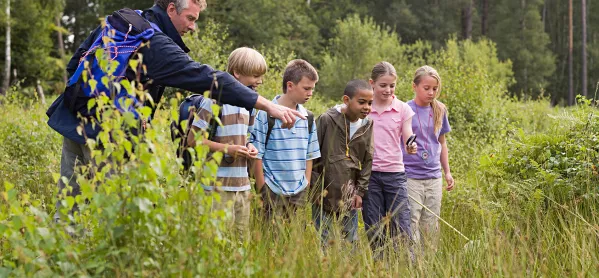There is a false dichotomy that often rears its head in early years foundation stage (EYFS) (and was recently tweeted about by Jan Dubiel of Early Excellence).
It’s the old tustle between teaching “stuff” and promoting learning through children’s natural curiosity.
Dubiel, quite rightly, questions why the two have to be mutually exclusive.
Quick read: Five questions we need to ask about EYFS
Quick listen: 3 myths about project-based learning
Want to know more? Green Bronx Machine - a garden programme with a real growth mindset…
A teacher’s job is to teach. Yes, the pedagogy may look a little different in Reception to Year 6, but, ultimately, the aim is the same.
Of course, if your children are not learning anything new, you are not teaching effectively (and under the new Ofsted framework, that is likely to be exposed). But if children are experiencing new learning, and building their knowledge and skills, it shouldn’t matter how they are being taught.
We need to be clear on how we develop and build on children’s knowledge, however we teach. Let’s look at some of the ways each approach can help in developing knowledge:
Adult-led:
Direct instruction
The adult decides the knowledge to be explored as part of their planning. This can be pursued in a number of ways but Ofsted will want to know why you have chosen that specific content to explore.
And so should you! Why are you teaching a theme on oceans to Reception class? What is the relevance for your children? What knowledge do you want them to acquire? How does this fit the sequence of learning across the EYFS? What is their prior knowledge? This may be different from a Reception class 10 miles away.
Story and song time
This is, again, led by the adult, exploring and learning to use new words. We should be making a note of new vocabulary uncovered in stories and trying to use it in the context of the children’s lives.
Reviewing learning, as in Tom Sherrington’s Rosenshine’s Principles in Action is how to make it stick (in big school they call it retrieval practice).
Don’t be fooled into thinking it’s something we don’t do in EYFS. This is exactly what most phonics sessions look like. But make an effort to think about how you do it and how often, and plan for it to be a natural part of your adult-led learning.
Small-group activities
The key here is to be really clear on what we want children to learn from these activities, or periods of planned sustained shared thinking, but at the same time listening carefully to what they know already and asking questions to help them make links with prior learning.
Adult direction also includes those wonderful and plentiful interactions that should be happening as part of child-led learning through play. The lines are blurred and there is often no visible demarcation of where knowledge is built.
Child-led:
Playing with prior knowledge
Building up serve-and-return interactions during play, taken from the child “serving” first, is an excellent way to assess and build on prior knowledge. For example, a child who likes to play with the trains initiates a serve by naming a type of engine or part of the train set. The adult then returns to confirm that knowledge and offers a further piece of knowledge to build on it: “These are the buffers, what do you think they might do?”
The teacher corrects any misconceptions and teaches new knowledge, and co-construction of learning happens as they play. Serve and return shapes brain architecture by developing the important neural pathways that make links to develop knowledge and make it stick. Ensure all staff are upskilled to know and deliver this.
Sharing specialisms
Building knowledge through children’s interests draws other children in, too, helping to spread a plethora of new ideas and language. Your class is now learning new vocabulary based on the interests of potentially 30 children, who all come with their own little specialisms. The key to good EYFS teaching is the ability to tap into them, build on the knowledge and share it widely.
Experiential learning
Those who advocate for more direct instruction for early years at the expense of experiential learning are missing the point. We are not talking here about children merely playing or experiencing alone, and constructing their own knowledge.
Experiential learning takes place with skilled adults, who help to make sense of the experiences and link them to prior or new learning. Documenting the experiences and learning helps the learning to stick, as adults make it visible and review regularly.
Nicky Clements is head of EYFS at Victoria Academies Trust. She tweets @nickyclements71





